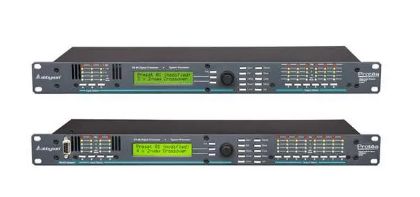The loudness of audio programs in broadcasting is improved by reducing the ratio of peak value to “average value” in dynamic audio. Within the allowable modulation range, if the peak value decreases, the average value can be increased, but this inevitably brings harmful side effects such as clipping. How to solve the “peak/average ratio” and to what extent should we deal with it?
Audio Processing Principle
1. Compression
The compression action is formed by reducing the gain of the signal when the average or root mean square value of the program signal level exceeds the compression threshold value, so the dynamic range of the program is compressed. The automatic gain control (AGC) amplifier is the compressor, which reduces the level difference between the soft sound and the sound, makes more full use of the allowable peak level range, and subjectively increases the sound of the soft sound part, But it will not make the loudness of the sound part louder.
2. Peak limit and clipping
Peak limit is an extreme form of compressor, which is characterized by high compression ratio and fast startup and recovery time. In modern audio processing, peak limit itself usually limits not individual instantaneous peaks in the waveform, but the peak value of the whole packet waveform, which is often clipped; Amplitude limiting and clipping will reduce the ratio (peak to average ratio) of the short-term peak value to the average value in the audio signal. The main purpose is to protect the FM transmitter from overload, but compression is different. The main goal of compression is to narrow the dynamic range of the program, achieve multi band compression and frequency selection. Multi band compression and frequency selection means dividing the audio spectrum into several bands and compressing or limiting each band separately. This is a more advanced audio processing technology in the contemporary era.
Unified tuning of audio processor and FM transmitter
1. Static adjustment
Connect the FM comprehensive tester, audio processor and FM transmitter, and turn the output knob of the audio processor counterclockwise to the end to turn off the output signal.
① The built-in attenuator of the audio processor is set according to the level of the audio signal sent by the radio master control room, and the output signal size of the FM comprehensive tester is determined at the same time. For example, if the normal broadcast level of the radio station is+10dB, the audio processor must be connected to the+20dB attenuator, and the maximum output signal of the FM comprehensive tester is+10dB.
② Select the output frequency of the FM integrated tester as 400Hz or 1kHz, adjust the output level of the integrated tester to+10dB, add the output signal of the integrated tester to the audio input terminal of the left channel of the audio processor, then adjust the audio input control potentiometer of the audio processor, and observe that the gain on the limiting meter decreases to 10-15dB.
③ Adjust the left channel output OUTPUT control potentiometer clockwise, observe that the frequency offset indication of the FM comprehensive tester should be slightly less than or equal to 55%, and if observe that the frequency offset indication of the left channel of the FM stereo decoder should be slightly less than or equal to 45%.
2. Dynamic adjustment
On the basis of static adjustment, turn off the transmitter according to the normal broadcast level plus the program signal, and observe that the gain of the left and right signals on the amplitude meter of the separate transmission time limit decreases to 10~15dB. If it is too large or too small, the input control potentiometers of the left and right signals should be adjusted separately. Note that the left and right signals must be balanced during adjustment.
① Turn on the transmitter and observe the left and right modulation frequency offset values respectively on the frequency offset indication of the FM stereo decoder. If the frequency offset is too large or too small, the output control potentiometers of the left and right signals shall be adjusted separately. Note that the frequency offset of the left and right signals must be the same.
② It is necessary to observe different types of program content. It is a complex technology to adjust the audio processing of broadcast programs according to the worst case. It should take into account both engineering and artistic aspects. The engineering goal is to prevent overshoot while obtaining the best signal-to-noise ratio and audio bandwidth in the transmission process of FM broadcast. The artistic goal is determined by the user of the audio processor.
In a word, the use of audio processor in the broadcast system has greatly improved the quality of the broadcast program, greatly improved the loudness, timbre and other aspects of the received broadcast program, and the broadcast effect of the broadcast can reach the satisfaction of the audience.
Combination of audio processor and FM transmitter

21
Nov

